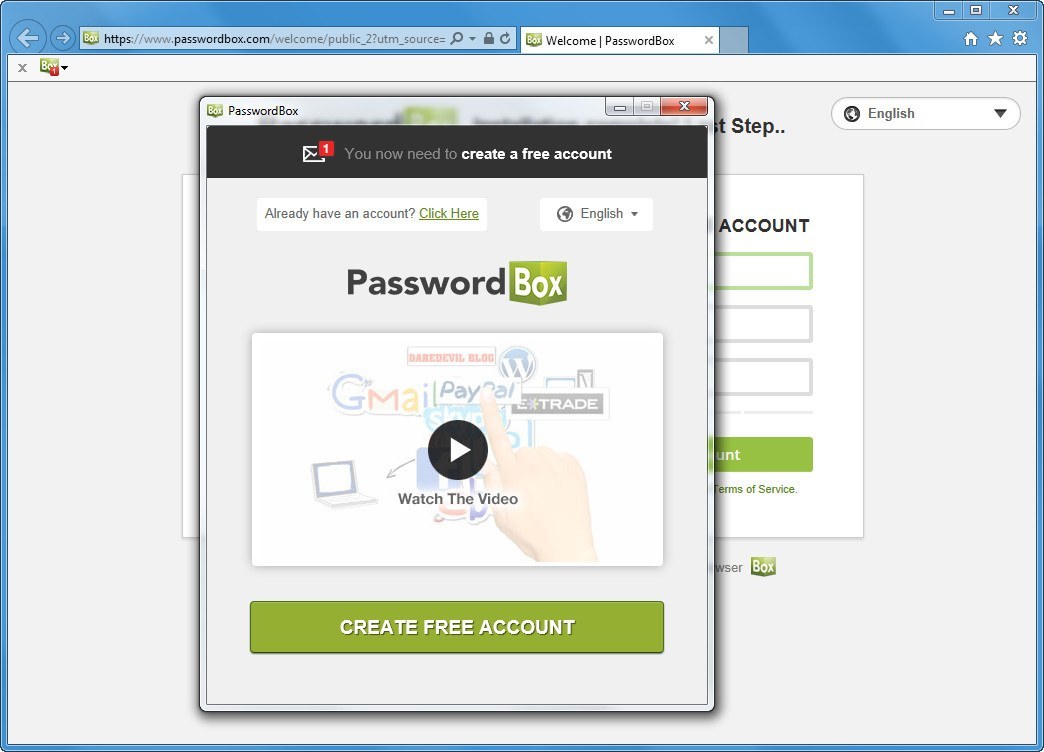

- #PASSWORDBOX TRUE KEY HOW TO#
- #PASSWORDBOX TRUE KEY FULL#
- #PASSWORDBOX TRUE KEY CODE#
- #PASSWORDBOX TRUE KEY PASSWORD#
In the User Object the password string property is readonly without any backing store it just returns the Password from the PasswordBox.Įxample: Public ReadOnly Property PassWord As String In the Example I have a public property in a Generic User Object Model.Įxample: Public Property PasswordAccessor() As Func(Of String)
#PASSWORDBOX TRUE KEY FULL#
Then From Xaml you bind the Content of a ContentControl or a Control Container Example: įrom there you have full control of the passwordbox I also use a PasswordAccessor (Just a Function of String) to return the Password Value when doing login or whatever else you want the Password for. I use a backing field just to do the self Initialization of the property. If IsNothing(_thePassWordBox) Then _thePassWordBox = New PasswordBox Public ReadOnly Property ThePassWordBox As PasswordBox It is just an implementation of Using PasswordBox and the MvvM Pattern.īasicly You create a public readonly property that the View can bind to as a PasswordBox (The actual control) Example: Private _thePassWordBox As PasswordBox That does not mean that I think it is the correct way or the best way. The way that I am Using PasswordBox in a Wpf MvvM Application is pretty simplistic and works well for Me. I have a VB vs 2010 Project that can be downloaded from SkyDrive. The ViewModel Stays Ignorant of the View. You pass a passwordbox to the View thru binding of a property in ViewModel, it doesn't use any command params. This implementation is slightly different. PasswordBox passwordBox = (PasswordBox) sender Private void HandlePasswordChanged(object sender, RoutedEventArgs eventArgs) PasswordBox.PasswordChanged += bindablePasswordBox.savedCallback PasswordBox.Password = (eventArgs.NewValue != null) ? () : "" PasswordBox.PasswordChanged -= bindablePasswordBox.savedCallback If (bindablePasswordBox.isPreventCallback) PasswordBox passwordBox = (PasswordBox) bindablePasswordBox.Child Private static void OnPasswordPropert圜hanged(DependencyObject d, DependencyPropert圜hangedEventArgs eventArgs)īindablePasswordBox bindablePasswordBox = (BindablePasswordBox) d / Handles changes to the password dependency property. So get rid of that "public string Password Keeping your password in plain text on the client machine RAM is a security no-no. I would suggest that when accessing the PasswordBox.Password CLR property you'd refrain from placing it in any variable or as a value for any property. The PasswordBox uses encrypted memory (of sorts) and the only way to access the password is through the CLR property. Which is considered quite a troublesome security attack vector. If WPF/Silverlight were to keep a DP for Password it would require the framework to keep the password itself unencrypted in memory. The reason the WPF/Silverlight PasswordBox doesn't expose a DP for the Password property is security related. Never keep plain text passwords in memory.


People should have the following security guideline tattooed on the inside of their eyelids:
#PASSWORDBOX TRUE KEY CODE#
I put a breakpoint and sure enough the code enter the static helper class but it never updates my Password in my ViewModel. I have my TextBox, this is no problem, but in my ViewModel the Password is empty.Īm I doing something wrong or missing a step? In Login I send along to my service a Username and Password, Username contains data from my View but Password is Null|Empty private DelegateCommand loginCommand īool result = securityService.IsValidLogin(Username, Password) You can see I check my property for Username here which works great. When I press it CanLogin is called and if it returns true it calls Login. My code is very simple, basically I have a Command for my Button. When I had the PasswordBox as a TextBox and Binding Path=Password then the property in my LoginViewModel was updated. I used the code above as stated and entered this Username is fine and is working as it's a TextBox. I basically have properties in my LoginViewModel for Username and Password.
#PASSWORDBOX TRUE KEY HOW TO#
It technically looks great, but I am unsure of how to retrieve the password. I found some interesting code here (has anyone used this or something similar?) It seems it's a security risk but I am using the MVVM pattern so I wish to bypass this. I have come across a problem with binding to a PasswordBox.


 0 kommentar(er)
0 kommentar(er)
